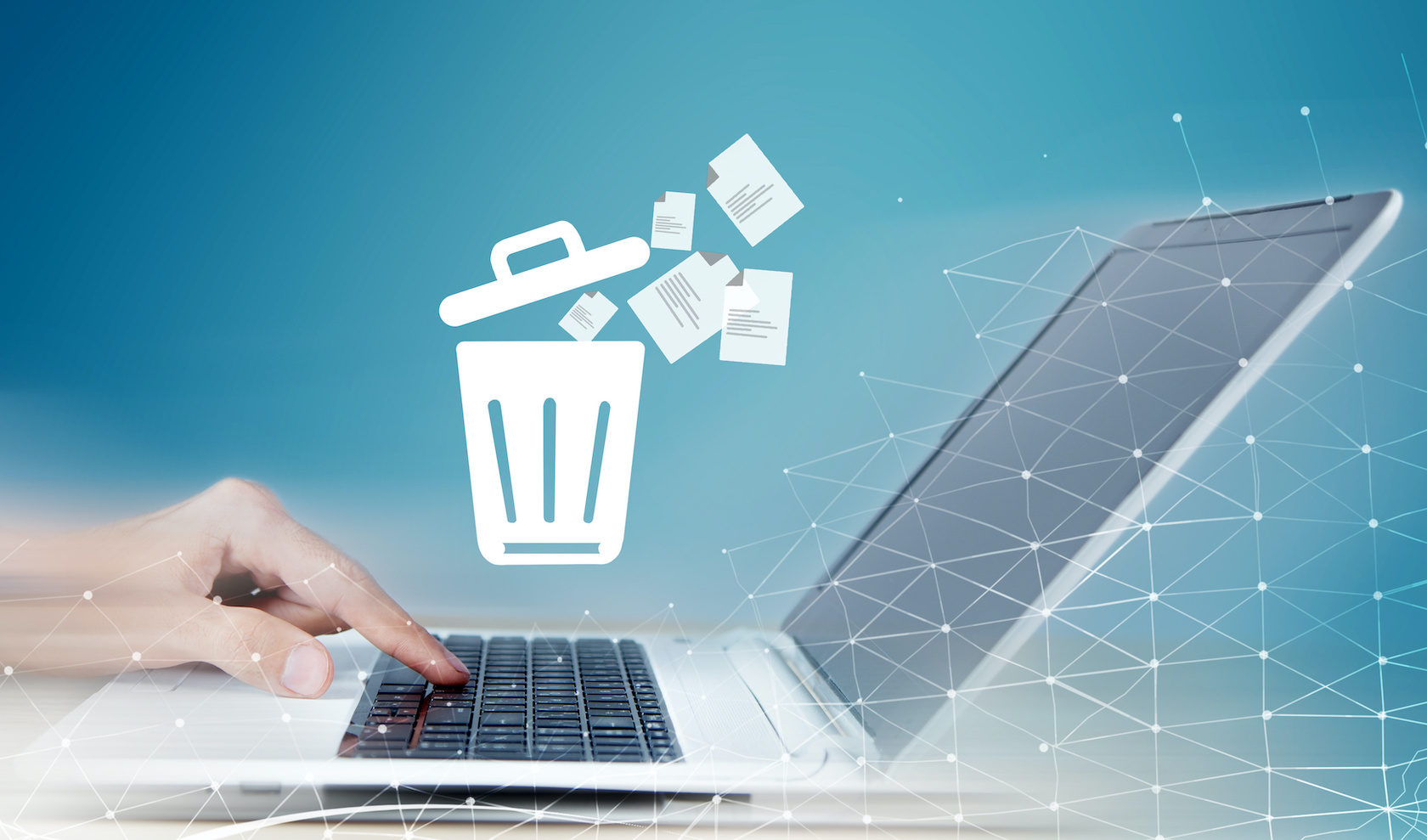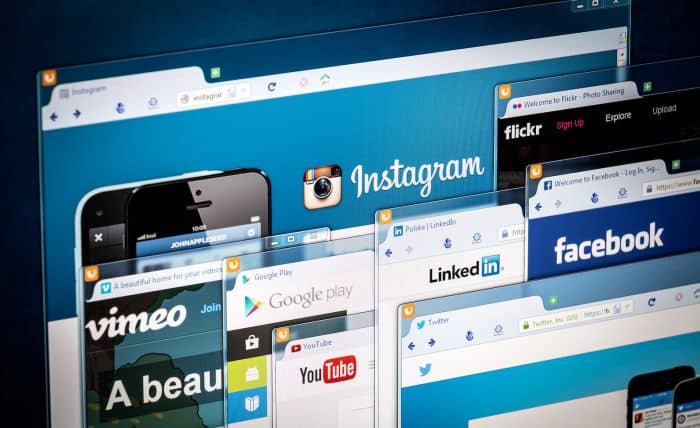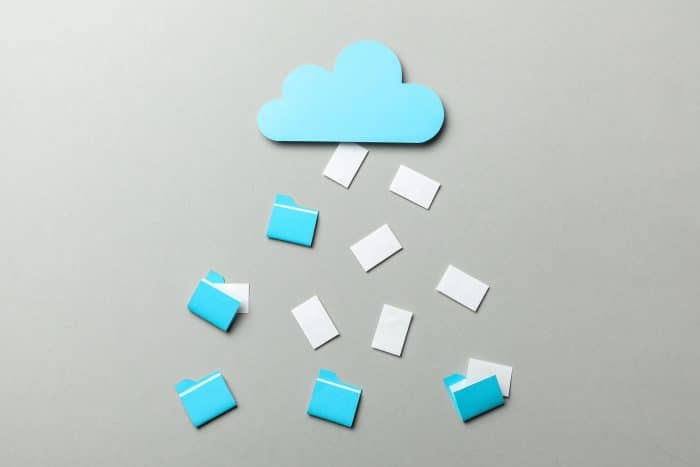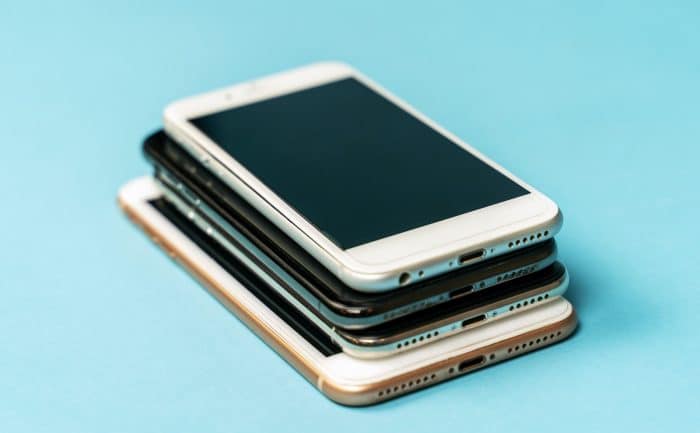January is often a time when we reassess and reorganize. After the holiday rush and the chaos of the previous year, the start of a new year feels like the perfect moment to take a step back and refocus. For many of us, this often means decluttering our physical spaces—cleaning out closets, sorting through old items, and clearing off countertops. But what about our digital lives?

Our digital clutter can easily be as overwhelming as the physical mess that accumulates over time. We juggle multiple devices, email accounts, and apps, all while trying to keep track of important documents, photos, and data. If you’re like most people, your inbox is likely overflowing, your phone is full of unused apps, and your cloud storage may be bursting at the seams with files you no longer need.
This year, why not take the time to declutter your digital life, just as you would your physical space. The good news is, with a little time and effort, you can streamline your digital environment to make it more manageable, efficient, and even more sustainable.
Make it Manageable
When we break down larger tasks into concrete, manageable steps that we can realistically stick to, it makes it easier to stay organized and reduces the feeling of being overwhelmed. By focusing on one small task at a time, it gives us a sense of accomplishment. For example, if your inbox is overflowing with thousands of emails, set aside just 10 minutes each morning to tackle a specific month. Every bit of time you dedicate moves you closer to the goal, and you’ll feel accomplished with each step you complete.
1. Declutter and Organize Your Email Inbox
Your email inbox is often the starting point for digital overwhelm. Whether it’s newsletters you never read, spam you don’t care about, or work emails that pile up, managing your inbox is a great place to begin your digital decluttering.

- Keep it simple. The key is to create a system that works for you and is easy to maintain, so you’ll actually stick with it. One way to keep your inbox tidy is to organize your emails into folders. You can begin by setting up folders with subjects like Accounting, Work, Travel, Family etc, to organize your inbox. See How to Manage your Inbox and Folder Management for more info.
- Delete or Sort Old Emails: Once you’ve set up folders, start sorting through old emails. Go through your inbox and move important emails you want to keep into the different folders you set up. That way they’re out of your inbox but still accessible. At the same time, delete, delete, delete old messages that you don’t need to keep.
- Use the Search Function: Search for a specific sender you receive a lot of email from, and file those to a suitable folder. In Runbox 7 (with local indexing enabled) you can use the Popular Recipients and Saved Searches features in the left pane to make this even more efficient.
- Set up filters: You can easily set up filters and rules in Runbox to automatically organize incoming emails into specific folders. This helps keep your inbox tidy and ensures that important messages are always easy to find. For example, you can create rules based on the sender, subject line, or even keywords in the email. So, if you get regular updates from a particular newsletter or work-related emails, you can direct them straight to a dedicated folder. You can also sort emails that are sent to your aliases into specific folders.
- Unsubscribe from Unwanted Emails: Use January as an opportunity to unsubscribe from newsletters, forum notifications, promotional emails, or other lists that no longer interest you. Don’t be afraid to hit that unsubscribe button—your inbox will thank you for it.
- Empty Trash: Last but not least, after you’ve deleted unwanted emails, make sure you empty out the Trash folder. This will clear space in your email account and reduce your need for more storage.
2. Organizing Your Files and Documents
Once you’ve tackled your email, it’s time to focus on the files cluttering up your devices and cloud storage. From old documents to photos and PDFs, it’s easy for digital files to pile up if you’re not regularly cleaning them out.

- Create a Folder System: Just like your email, your files can benefit from a clean folder structure. Create a folder structure that makes sense to you. Organize your documents into categories, such as “Work,” “Personal,” “Taxes,” or “Family,” and create subfolders to keep things even more organized. The goal is to keep it simple and intuitive so you can easily find what you need. Using consistent and descriptive names for your files and folders can help you identify the contents of a file or folder without having to open them.
- Clean Up Your Desktop: Start with your desktop—it’s often the dumping ground for files we don’t want to deal with right away. Go through each item, deciding if it’s something you still need. For anything important, organize it into a folder. For everything else, delete it. Next, move on to other files in folders such as Downloads and Documents.
- Consolidate and Backup: If your files are scattered across multiple devices or cloud storage platforms, now’s a great time to consolidate them. Start by reviewing all your storage locations to get a clear overview of what you have, and identify old or unnecessary files to declutter. Then, choose a secure file storage service (such as Runbox Files) to back up important documents and photos to keep everything in one organized place. This will free up space on your devices, improve efficiency, and ensure your data is safely backed up and easily accessible whenever you need it. Consolidating also reduces the risk of data loss and makes sharing files easier and more secure.
- Delete Duplicates: If you tend to save multiple copies of the same file, go through and delete the duplicates. You’d be surprised how much unnecessary storage space these redundant files take up. Tools like Gemini 2 or dupeGuru (free) can help identify duplicate files. There are also file organization software such as FileJuggler, a paid service that organizes your files for you.
- Empty Trash! Last step, empty the Trash. This will permanently delete the files off of your device.
3. Sorting Through Your Photos
We all accumulate photos over time, but do we really need every single one? Whether they’re family memories, vacation snapshots, or random pictures you’ve taken for work, your photo library can become overwhelming if not managed properly. Again, break it down into manageable chunks – work on one month or one year at a time. Here’s how to clean it up:

- Delete Blurry or Duplicate Photos: Start by going through your photo library and deleting anything blurry, out of focus, or redundant. Often, we take multiple shots of the same thing – time to pare that down to the best one.
- Organize: You can create albums or folders for different occasions, like “Vacation 2024,” “Family Holidays,” or “Work Projects.” Categorizing your photos might make it easier to find specific memories later on. Another option is to keep your photos without sorting them into folders – Google and Apple lets you search by date, location, item or person. This makes it really simple to find photos without sorting them. The most important thing to do is to delete duplicates.
- Consider Cloud Storage: Store your photos in cloud services which offer secure, accessible storage. Cloud services also make it easy to sync your photos across devices, so you can access them anytime, anywhere, without filling up your phone or computer’s local storage.
- Opt for Digital Minimalism: Don’t feel the need to hold onto every photo. Be intentional with what you save. Ask yourself: Will I actually look at this photo again in the future? If not, delete it. This will help prevent your photo library from becoming an overwhelming mess.
4. Managing Your Accounts
Old or unused accounts can create digital clutter, even if you’re not actively using them. Whether it’s a forgotten subscription, an old social media profile, or accounts for services you no longer need, it’s worth cleaning them up. Here’s how:

- Review Your Accounts: Go through the apps and online services you use. Are there accounts you signed up for once and never used again? Are there social media platforms you no longer engage with? Take a few minutes to delete or deactivate these accounts. The web site Just Delete Me provides a directory of direct links to delete your account from web services and popular platforms.
- Consolidate Accounts Where Possible: If you have multiple accounts for similar services, consider consolidating them. For example, you might only need one cloud storage service, one email provider, or one password manager. Streamlining your accounts reduces the number of places you need to log into and manage.
- Secure Your Active Accounts: Once you’ve deleted unused accounts, don’t forget to secure the ones you still use. Enable two-factor authentication (2FA), update your passwords, and review privacy settings to ensure your data is safe. Here’s how to add 2FA to your Runbox account.
- Review Privacy Settings: Take a moment to review your privacy settings on social media and other platforms. Ensure that your personal data is protected, and update your preferences as needed. This page provides a comprehensive list of links to privacy settings on different platforms. Master List of Privacy Settings.
5. Cleaning Up Your Devices
We all tend to accumulate apps, files, and unnecessary data on our devices. Phones, tablets, and laptops often get bogged down with digital debris that can slow them down and cause frustration. Here’s how to tidy them up:

- Optimize Storage: Many phones and computers allow you to see what’s taking up the most space. Take advantage of this tool to delete apps, files, and data you don’t need. Move larger files to the cloud or an external drive to free up space on your devices.
- Uninstall Unused Apps: Go through your devices and remove apps you haven’t used in the last few months. Uninstalling apps not only frees up storage but also removes unnecessary notifications, reducing digital distractions.
- Clear Out Cache and Browsing History: Regularly clear your browser cache, cookies, and history. This will help your device run more smoothly, improve performance, and protect your privacy.
6. Regular Maintenance: Keeping It Clutter-Free
Once you’ve decluttered your digital world, it’s essential to establish a routine to maintain your organized space. Set aside a few minutes each week to review your inbox, clean up your files, and remove unnecessary apps or photos. Regular maintenance will keep your digital life streamlined and prevent it from becoming cluttered again. And remember—if your system isn’t working, don’t hesitate to tweak it until you find something that suits you better.
7. Decluttering Your Digital Life for the Planet
An added bonus of decluttering our digital stuff is that it’s good for the environment. Unless your service or device is running entirely on renewable energy, all of the digital clutter has an environmental cost – from the energy required to power the servers that store your data, to the resources used in manufacturing the devices you rely on. Reducing our digital clutter can also reduce your carbon footprint and the amount of hardware required to store the data.

- Eco-Friendly Digital Decluttering: By reducing unnecessary emails, files, apps, and accounts, you’re helping lower the demand for energy-intensive data storage. You’re also decreasing the environmental impact of e-waste by reducing the number of devices you need to buy, store, and eventually dispose of. Every small step you take in decluttering your digital life is a step toward a more sustainable future.
- Recycle old devices: When it’s time to part with old digital devices, it’s easy to recycle them responsibly to help keep e-waste out of the environment. Check your local town or country’s programs for recycling e-waste. In the US, companies like Staples, Apple, and Google offer convenient recycling programs to help you dispose of your devices sustainably. Staples in the US has a free tech recycling program where you can drop off old electronics, from phones to laptops, for proper disposal. Apple’s Trade In program lets you exchange old devices for credit toward new ones, or they will recycle them for free if they’re no longer usable. Google also offers an electronics recycling program for Pixel phones and other devices, ensuring they’re either refurbished or recycled in an environmentally responsible way.
Final Thoughts
By taking the time to declutter your digital life this January, you’re not only creating a more organized and efficient space, but you’re also setting yourself up for a calmer, more productive year ahead. Whether it’s cleaning up your inbox, organizing files, or eliminating unused apps and accounts, each small step you take brings you closer to a more streamlined and balanced digital life. As you tackle your digital clutter, you’ll feel lighter, more in control, and better equipped to handle the ever-growing demands of the digital world. So, why wait? Start today, and let this year be the one where you reclaim your digital space—and your peace of mind.
Happy decluttering!
